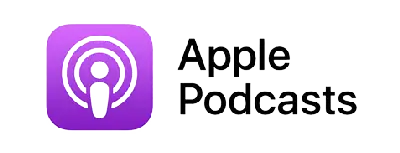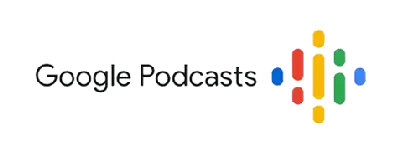You know what? I LOVE a good HOT TAKE and this week; I’m going to be real with you. Marketing doesn’t have to be a constant grind of pushing your services and reverting to this because you have no strategy, so you almost shout at your audience to buy (and you don’t even realise you’re doing it). What is real and way more powerful? When we flip the script and start telling stories instead of giving sales pitches.
In this episode of The Hayley Osborne Show, I’m sharing 8 ways to market your business with a story that feels human, like you and not robotic or salesy. I’m talking about creating connections, pulling at heartstrings, and making your brand something people genuinely care about. It’s time to move away from the hard sell and invite your audience into something meaningful. Meaningful sales.
If you’re ready to start sharing your story and not in a “spill all the beans on the ins and outs of your whole life” kind of way, but more so in a strategic way, let’s get it.
This episode is for anyone who wants their marketing to feel real, authentic, and powerful. No fluff. Just a heart. Listen in and let’s make marketing feel like something worth doing.
SUMMARY
0:00:01 – Introduction and podcast show purpose
0:01:30 – Explanation of taking a week off due to illness
0:02:30 – Introduction to the topic of storytelling in business
0:03:45 – Importance of longer-form content like podcasts and blogs
0:05:00 – First point: Starting with a relatable problem
0:06:30 – Second point: Introducing yourself as the hero
0:08:00 – Importance of focusing on benefits, not features
0:09:48 – Third point: Making the story about the customer
0:12:30 – Discussion about marketing degree and changing landscape
0:14:00 – Fourth point: Using emotion to drive engagement
0:15:00 – Fifth point: Conflict and resolution in storytelling
0:15:30 – Sixth point: Building a strong brand voice
0:16:45 – Seventh point: Using real customer testimonials
0:17:30 – Eighth point: Leaving room for imagination
0:18:30 – Conclusion and call to action
0:19:30 – Podcast outro and invitation to subscribe
Hayley Osborne
Hello and welcome to another episode of my podcast, the Hayley Osborne show. I am so glad that you are here today with me in your ears after a week off, where that was last week, where I was unwell with a cold and a very, very blocked sinus area, and that’s just not what you want in your ears. And so I decided to have a week off and bear with me. I’m still kind of like, not quite better, but I am better, if that makes sense. So I took a week off, and it was needed. It was much needed. So not off from the business, just off from the podcast, which, you know, it’s fine. Here we are again, with me in your ears for another week.
And one of the things that I wanted to talk about today, and it’s something that I’m hot on and strong on in building brands in and around, is storytelling, because I think that that fundamentally, is the thing that is going to grow your business, not a sales pitch. Okay, so I wanted to come to you today with my hot take on storytelling, because, yes, I’ve spoken about storytelling before, and I think it’s just a nice refresher and reminder to everyone that listens to this podcast that it’s going to be the story that people can relate to that are eventually going to buy from you.
Okay, whether it’s you know immediately, which is probably not, but your consistency through storytelling and through showing up. And you know, I’m not saying bear your soul, but I’m saying go deep in your story and why you do what you do and how you help people, and mostly the benefits that you solve so your transformation that you provide when you go deep into that story, more and more people can relate to you, okay, over and above what a sales pitch looks like, and that does require strategy. You do need to learn to do the work.
Think about what you are going to talk about before you actually do okay? So a great way to be able to story tell is through longer form content, right? Which are things like this podcast, which I think has been the best thing that I’ve actually ever created inside of my business. And second to that, is a blob. Okay, because these things have life and have longevity and sit in lots of different places. Okay? So my podcast, for example, sits on Spotify. It sits on Apple. It sits in my blog, it sits on YouTube, it sits everywhere.
And the blog then creates my weekly emails, which sit in your inbox and like it cascades down from there, okay, as opposed to a social media post, standalone in and out, five minutes of life and gone. Okay, so I want to give you today my hot take on storytelling. Okay, to be able to build your business for the long haul. And, you know, I think we have all been constantly trying to sell, but storytelling is actually the most powerful way to be able to market your business. And when you get it right, this is what connects you to your audience so much better, and it makes you an inspiration, okay? And when you become that, your audience takes action. So I’ve got eight things I wanted to talk about today, to build a story, not a sales pitch.
And I think that you are, you know, when you start to tell stories instead of pushing a hard sell, I think that’s the turning point where you start to see your marketing take off, and I know a lot of you in my world are doing that, and you’re seeing beautiful results, and that’s awesome, but if you’re not, it’s time to get storytelling. Okay? So I think the first part, number one, is to start with something that is relatable, a problem that is relatable. So I think every great story starts. The problem. Think of like your favorite books, your movies, they all begin with some sort of challenge, some sort of conflict that someone has to overcome.
Marketing isn’t very different, okay, so when you can market your business with a story, you can begin highlighting a problem that your target audience can relate to. So, you know, I talk, I’ve talked about your transformation message. So that is the thing that people see when they first land on you anywhere and your business. So the problem that they will see you fixing is in that message. So we talk about, who is the audience that you serve, what is the problem that you solve and what is the transformation that you provide? Okay? And that’s the relatable problem. So if you’ve nailed that, I kind of like to think of how I go about marketing is like I talk about all of the building blocks and how it all interconnects, and how it all can help you to, you know, rise above and get to that next level, and keep on building that, that brand that you’re trying to build to create more momentum to build that, know, like and trust so more people get to know you.
They like you, they trust you, they buy from you. So I think that instead of jumping straight into your product or service, which I think is a bit more of a panic posting, start by showing that you understand pain points. Okay, so the problems that you solve, and I think that’s the first part in creating a meaningful connection with someone, because at the end of the day, however you whatever kind of marketing that you’re doing, wherever you’re showing up, there is only one person at the end of that reading what it is that you have to say. I know that you’ve probably got 1000s of people in your database.
You know a good cross section of 1000s of people from all the social media platforms that you have. But essentially, if you’re on your stories, if you’re appearing in someone’s feed, it’s one person reading your content. Okay? So when you can start showing that you understand what their problems are and what their pain points are, I think that connection starts to build. So let’s say I’m going to leave that till after actually bearing with me. I have a method. Okay, so the second part is to introduce yourself, okay, obviously, as the hero that solves the problem.
So that’s in the transformation. So, you know, you’ve obviously got in your transformation message, you’ve got your audience. So who it is that you help the problem that you solve and the transformation that you provide. You are the hero in all of this. Okay, you’re the one that can solve the problem. So the hero saves the day, right? In every superhero story. Because, you know, I always refer back to being a superhero. Owning a business is just like being a superhero. Being a mum is like being a superhero. I feel like I wear all the hats, but the hero saves the day, right? Mum saves the day. You know, Dad saves the day too, but the mum saves the day and then you know, your business saves the day, so you’re the hero, right?
So in marketing, your story, your product or service is the hero, okay? So it’s important to show how that fits into the story. So never, never, never, just a list of features people don’t care about. People don’t care that you could take, you know, here’s a 50-page book on X, Y and Z. No one cares about that. They care about what benefits are in it. For them, we are all selfish humans that want to know how it can impact our lives and benefit us.
So we don’t care about the features, we just care about the benefits. So instead of bombarding your audience with a sales pitch, think about how your service or your product helps your customer, so helps the hero solve the problem. Okay? So how do you introduce that rather than just saying this is what I offer? Okay, you could say something like, after weeks of frustration, you know, she found the solution she was looking for when she discovered our time management program, it helped her start to save more time and make more progress in her goals, something like that, something around time hacking, I don’t know, but do you see the kind of linear progression of how we’re talking about the benefits, not just the features?
And I think that it makes your product or service feel like that is the thing to unlock somebody’s success rather than just listing features. Okay, the third one I want to talk about is making it about your customer. Don’t make it about you. So I think this is where lots of businesses get it wrong. And I see this heaps on social media where everything is about that. About the person rather than about the customer, and when you’re using storytelling as a way to market, there is definitely an art to this. It is not the easiest thing to do, even when you are writing about a section on your website, I feel like that is one of the hardest things that I’ve found, that the businesses that I work with struggle to write, because what it needs to be is actually about your customer, not about you. It is about you, but it’s more about what you can do for your customer.
Okay, so nobody cares if you’ve got nobody cares if I’ve got a marketing degree. It’s nice to have, but probably not necessary. Has it impacted the way that I run my business right now in 2025? No, I got my marketing degree in, I don’t know, 2009 let’s just paint that picture, guys, there was no social media. There was no Facebook, but there was no Facebook for brand pages. Instagram started in 2000 actually, I may have got it in 2008 See, I don’t even remember, but yeah, I have a marketing degree, but it is squishy with what I do today. So it’s just consistency and time in the game and constantly learning and learning and building your knowledge, and upskilling and anything new that comes out.
Obviously, you know, this is something that I care deeply about. I really have an interest in learning all of the new things on how to help you to build your business. So back then, there was no social media. People didn’t really use the internet as much as what they do now. Like, I’m not even that old, and it just, it makes me it’s just very funny to actually say that out loud. So life is different now, and so I think that, you know, it’s not just about you. So anyway, we definitely, I have definitely digressed there, but it was a nice little segue on maybe something that you didn’t know about me, but here we are. I think that you don’t need to tell your life story.
You don’t need to boast about how great you are. No one cares about that. Instead, I think you need to focus on the transformation that you can give your customers, okay, and what kind of experience they can have. And have that on your about page. Have that you know cascaded through your website. Have that as social media posts, as blog posts, if you have a podcast, great. Okay, so use that as opposed to things about yourself. Highlight your customers journey you know before, during and after, working with you, buying from you.
What does that look like? Let them be the heroes in your story and your storytelling, and show how what it is that you sell helps them overcome what it is that they’re struggling with. I think that’s really important. So not you. Unfortunately, it has to be very well crafted to be the other way around. And I see a lot of people just slip into selling because they don’t have a strategy, because they don’t have a story on how they’re going to show up in their business. We need to get more and more clever. Okay, especially with the rise of AI, everyone’s sounding like everybody else. It’s becoming boring, whereas no one can ever be you.
So you need to sit down and have a think about what that looks like to you, what lights you up, and when you start leaning into that, more and more the rest will follow. Trust me, you be consistent, you show up, you be more you, and the rest will follow. I’m not saying bear your soul by any form at all. I don’t share my kids on my social media. I still tell stories, not about them, but I’m still a great storyteller, right? So I don’t make it a secret that I have children, but I don’t share them at all. So I think it’s definitely all in your strategy. And you know, I think your audience don’t care about how amazing your business is or how long you’ve been in business. They care about how it impacts them and what is in it for them.
Okay, the fourth one I want to talk about is emotion. Okay, so how can emotion drive engagement and connection? So we all know that a powerful story tugs at the heartstrings. We all know that we’ve all, you know, teared up in awesome movies that have been beautiful, that story tells storytelling, but we know that emotions are what makes a story really memorable. And I don’t mean like, you know, being all sad sack or whatever, whatever. I know everyone loves a great triumph story, but it doesn’t have to be like that.
Okay? You just have to get really creative. If you can connect with your audience in some way, shape or form, emotionally, they are more likely to trust you. They are more likely to relate to you and ultimately take action. Okay? The next one. There are five conflicts and resolutions. All right, so great stories have conflict, and your story should be no different to how you are marketing your business. You obviously know you are solving a problem, whether it be through your service or through your product.
And so it’s important that you show your audience what they are struggling with, what they’re facing, and introduce your product or your service as the resolution. Okay, so that’s kind of like the conflict, conflict and resolution, but you need to create that through your storytelling, and there is definitely an art to doing that. The sixth one I want to talk about is building a strong brand voice. Okay, so you play a huge role in guiding your audience on your brand.
And I guess the plot, the plot twist when you market your business through storytelling, I think your brand voice serves as the narrator, as the person that tells a story. Okay, so when I see it go wrong it is usually, if you have a whoop, it doesn’t matter if you have a personal brand or you don’t. If you’re the one that is behind your business, you’re a small business. Usually, if your business has stayed a bit stagnant, but you have grown and you’ve constantly built your knowledge.
You’ve educated yourself, and you’ve upskilled a lot, but your business, your you haven’t updated your strategy, and you’ve kind of stayed the same, then you will become so far removed from that business, your brand voice, and you will be disconnected, and you’ll find it really hard to show up, because you no longer align with your what your brand stands for. Okay, so building a strong brand voice requires for you to keep going back in and, you know, upgrading that narrative in and around yourself. I think it’s really important.
The seventh one is using real customer testimonials. And I know I say this a lot, but one of the most powerful ways to say you’re amazing is like someone else saying it for you. There is no other way. So get the testimonials. I’ve got a script that I take my members in superhero marketing through so they can ask really intentional questions when they get testimonials from their clients. Okay, so you know, these are your Real-Life Superheroes. These are the heroes in your story. You’re great, don’t get me wrong. But there is nothing like someone saying you’re amazing. Okay, to build your brand and your street cred. Okay?
The eighth one is leaving room for imagination. Okay, so the best stories of all time leave something to the imagination. So when telling your story, don’t give everything away in one go. Don’t give, don’t lay all your cards on the table, because then why would people need to buy from you if you’ve told them everything? Okay? So let your audience fill in the gaps and leave a little mystery, leave a little intrigue, and encourage your audience to follow along for the story. Encourage cliffhangers and really strong calls to action to click through to your website.
Okay, leave room for imagination to keep them wanting more. Okay? So when you have that strength, okay, and you’ve built that trust, then it leads to sales Okay, that’s it. That’s all I wanted to talk about today. My hot take on storytelling, okay, to build your business, not a sales pitch. Okay, there were eight points they go through if you need to again, the show notes will be over on my website. If you wanted to go back and jot them down. Hopefully you are multitasking by listening to this podcast while walking or while you are driving somewhere. You’re in the car. I love a good multitask. So, you know, it’s a nice way to quickly upskill and, you know, stay with your finger on the pulse.
I hope you have a great week, guys, and I will see you next week for another episode of The Hayley Osborne show. I hope you’ve enjoyed listening to this episode. If you have hit subscribe, so you don’t miss any new episodes released every Tuesday. And while you’re there, leave me a review. I would absolutely love to read it.
Also, don’t forget to tag me @hayleykosborne over on Instagram and share this post with your audience so they can get learning too. Sharing is caring. If you want more, head over to hayleyosborne.com/category/podcast for today’s show notes and links. Catch you next week for another episode of The Hayley Osborne show.






